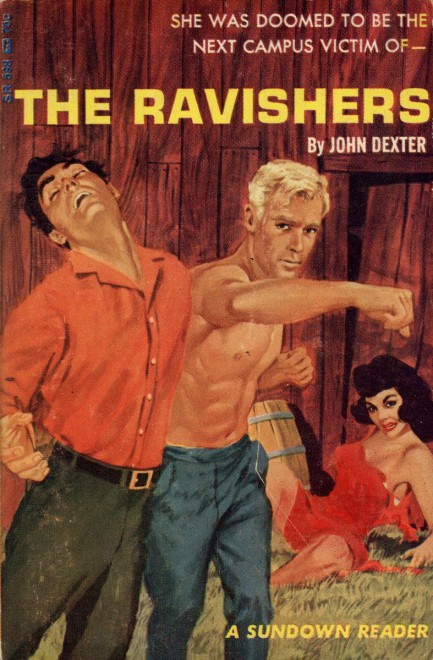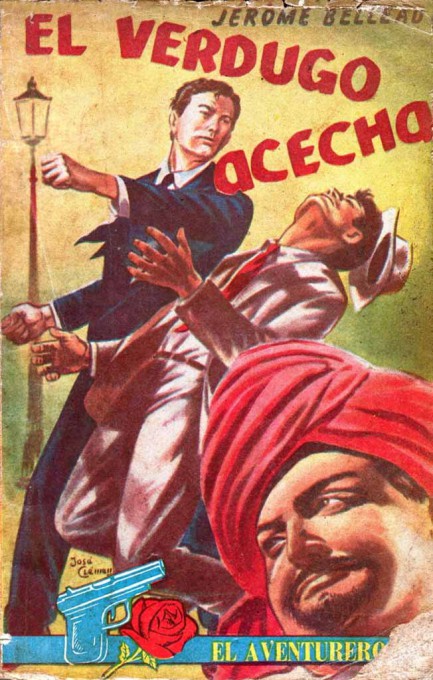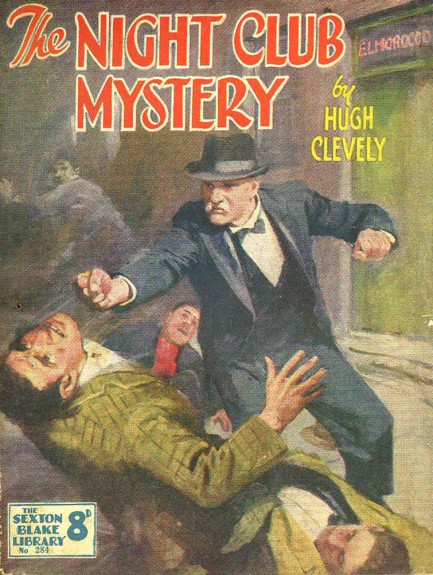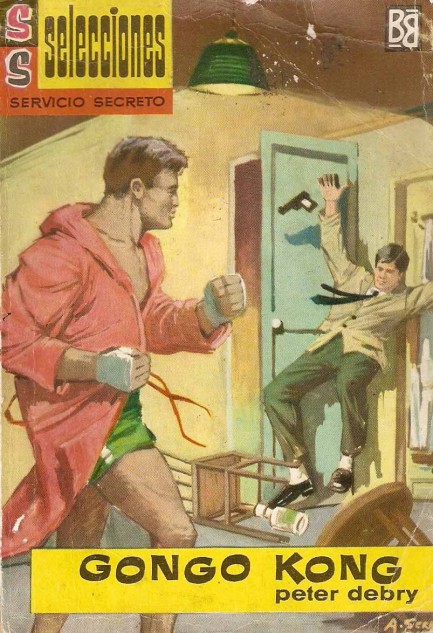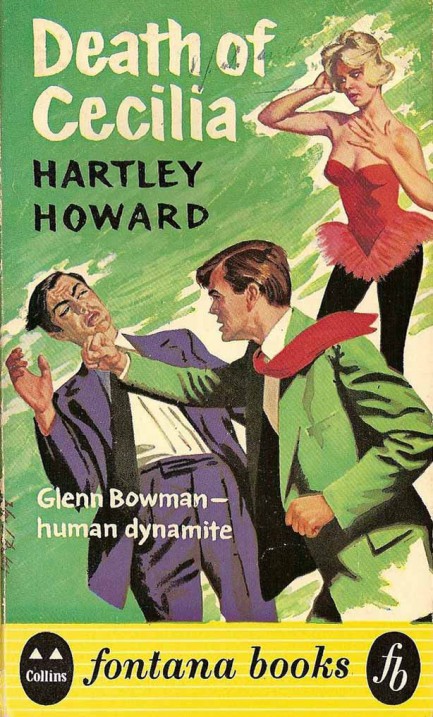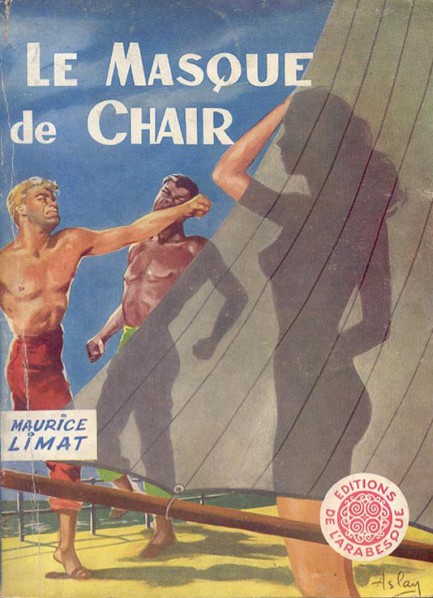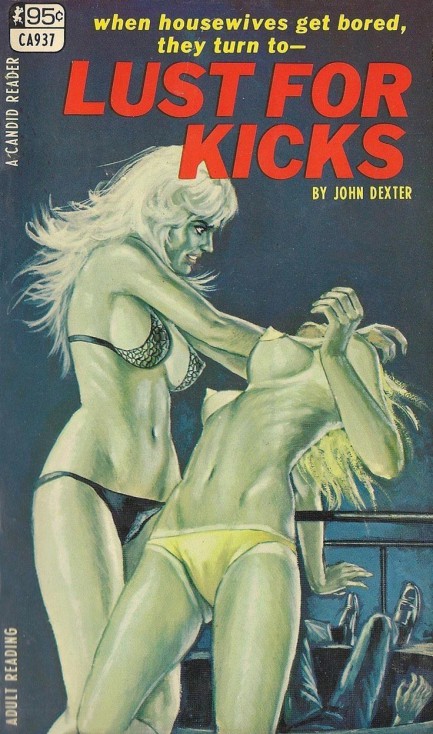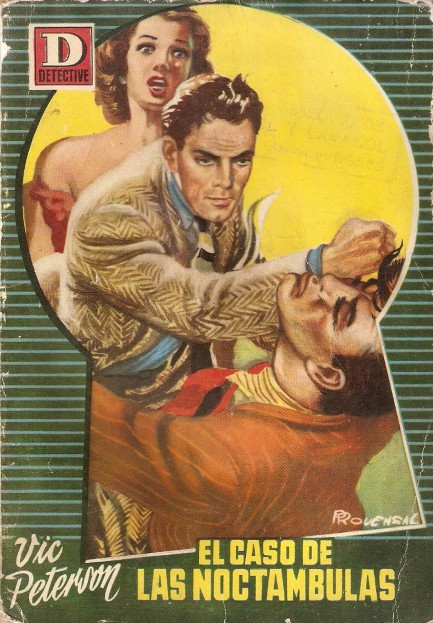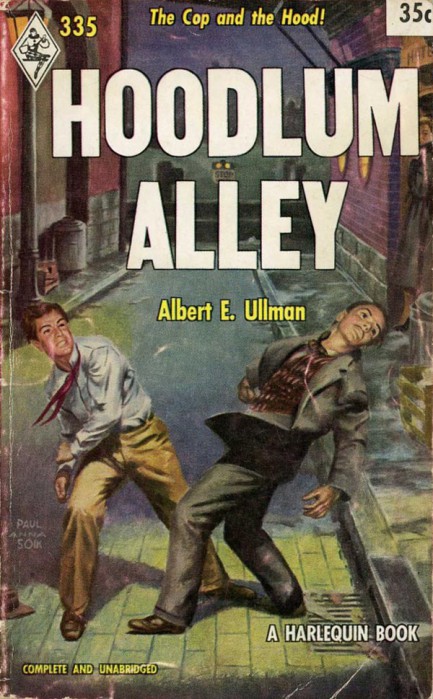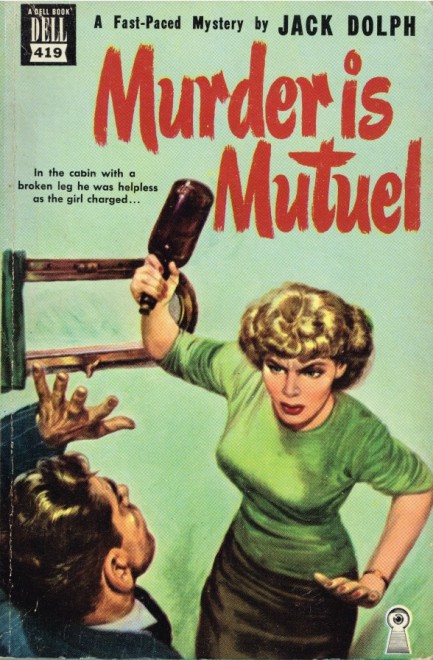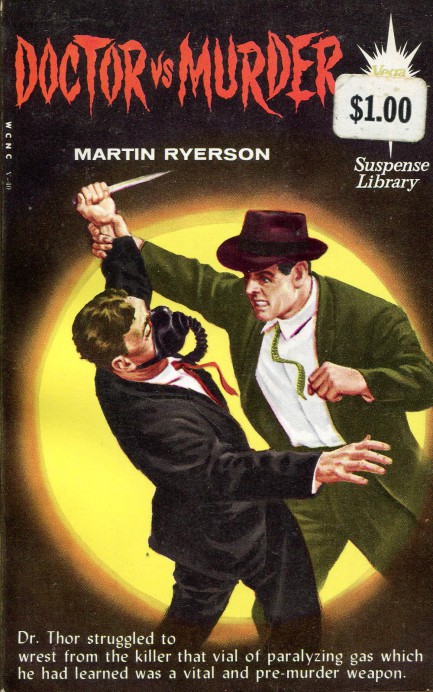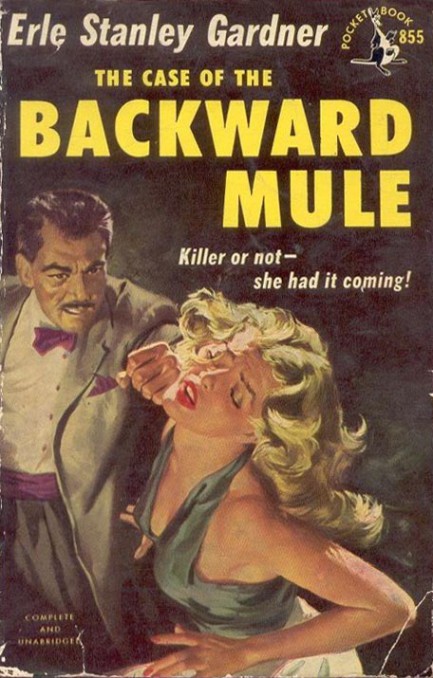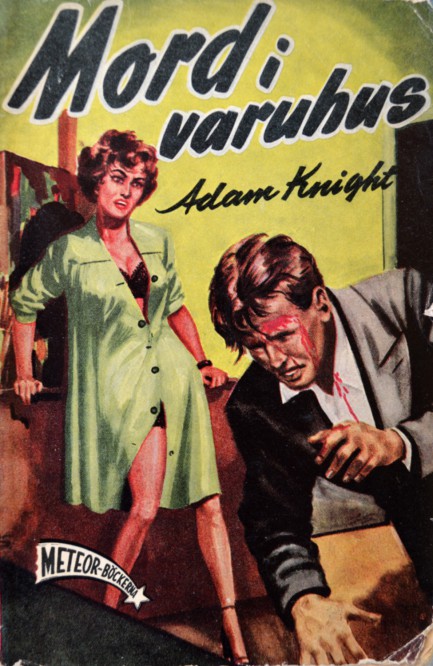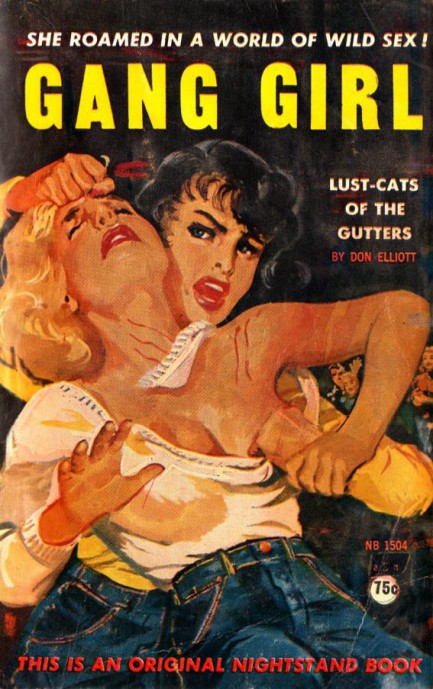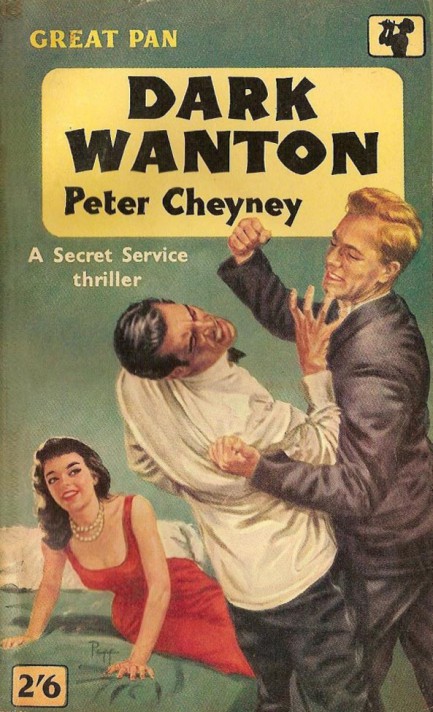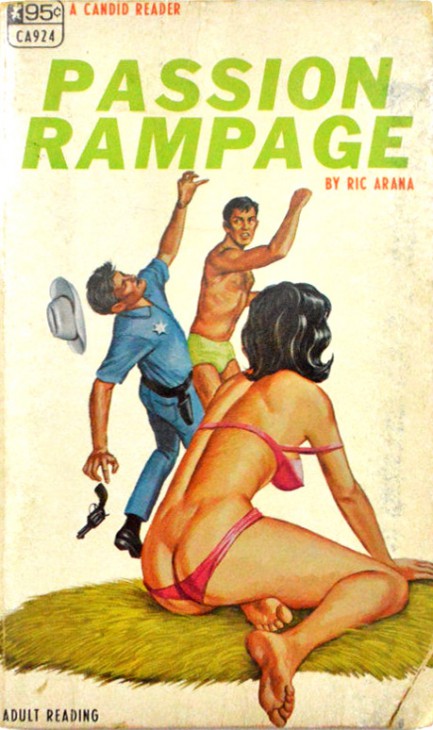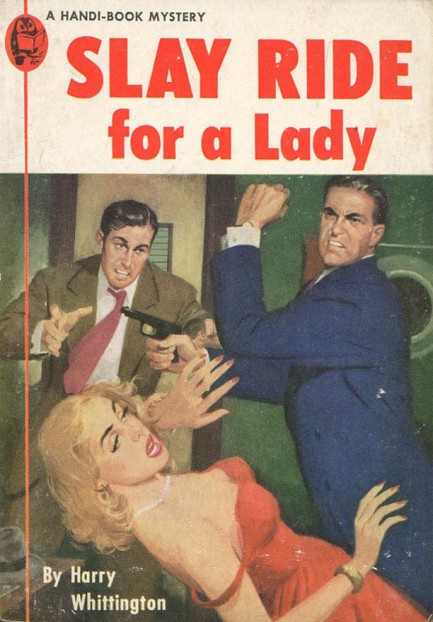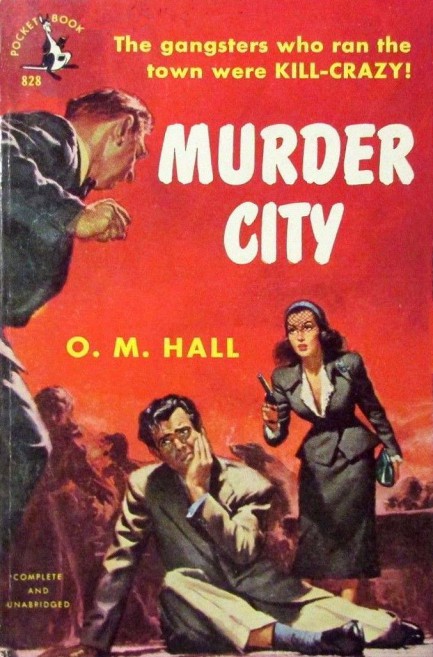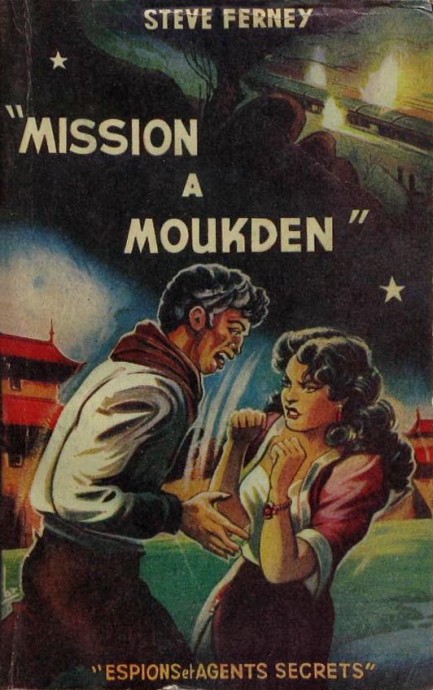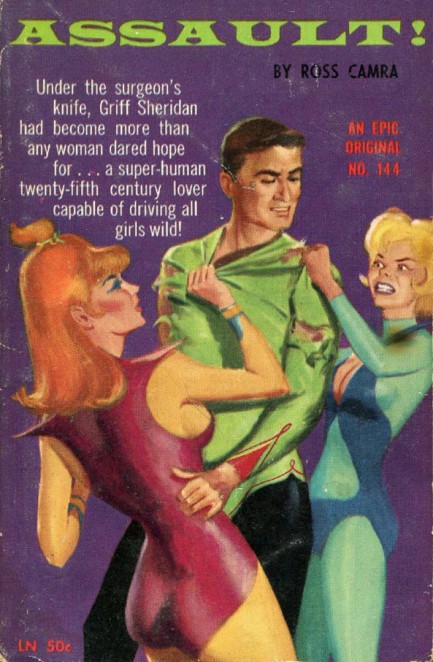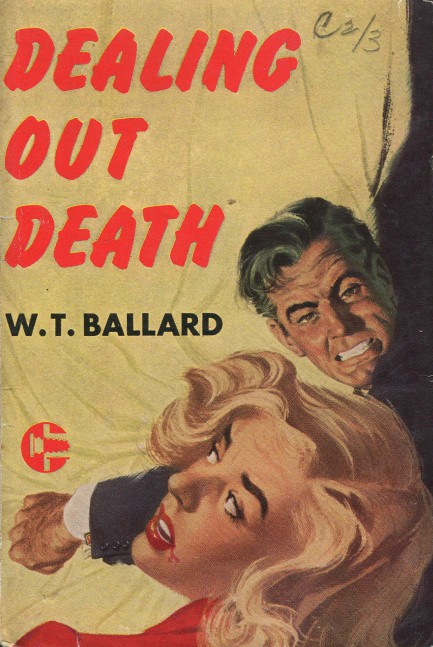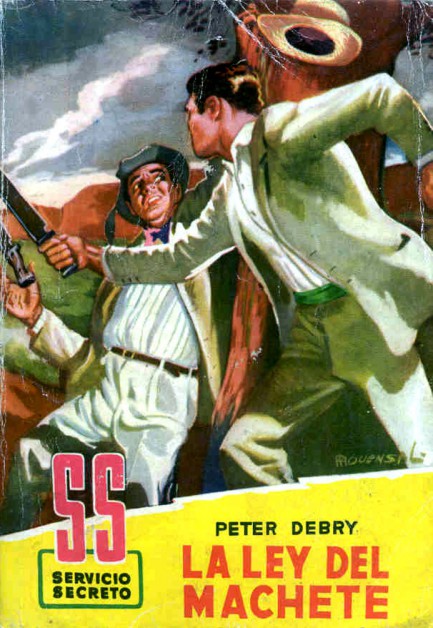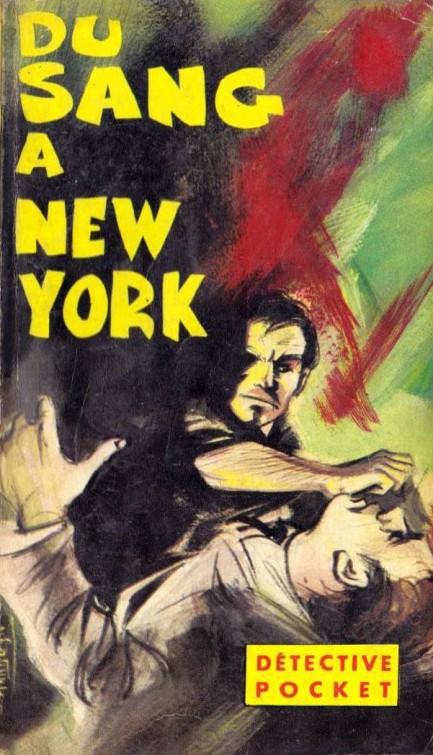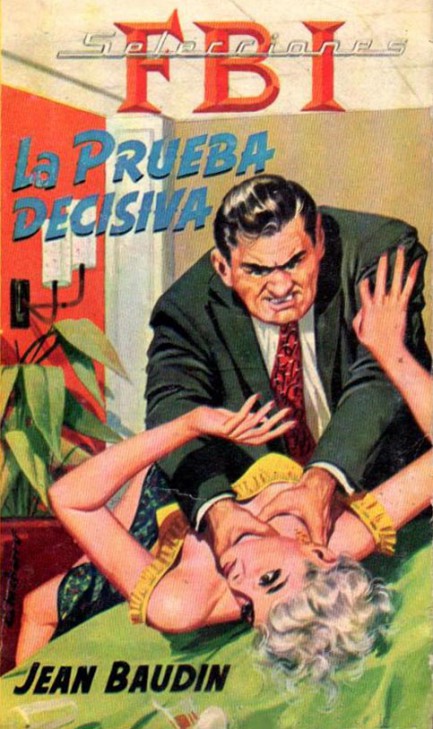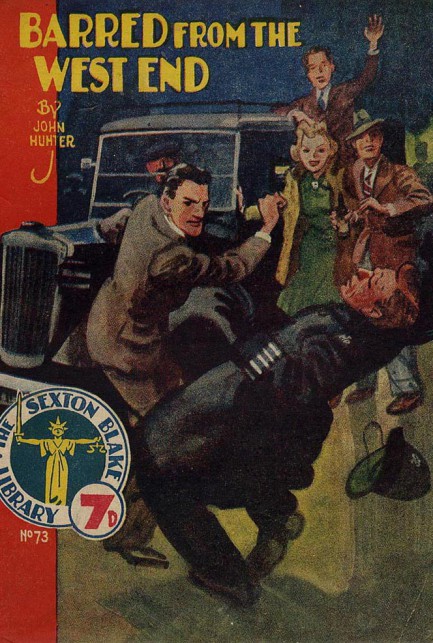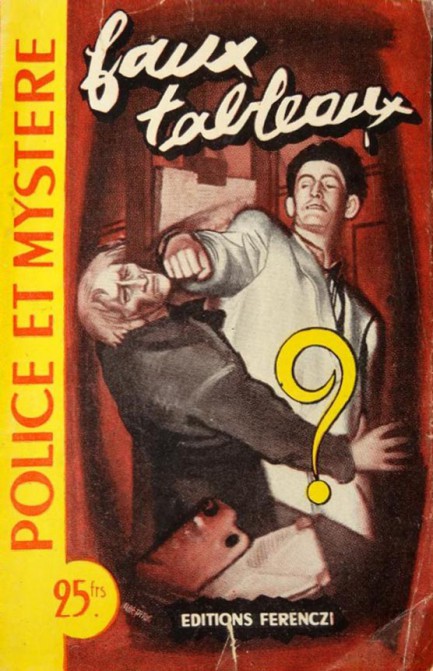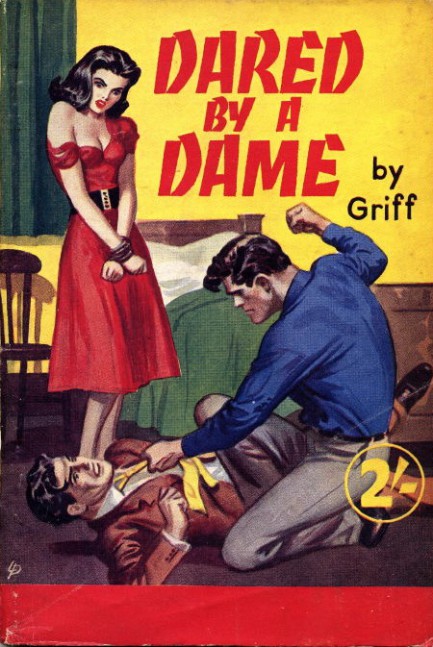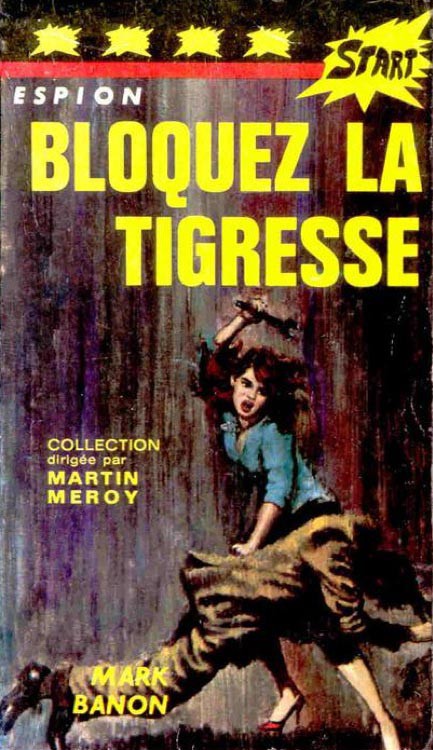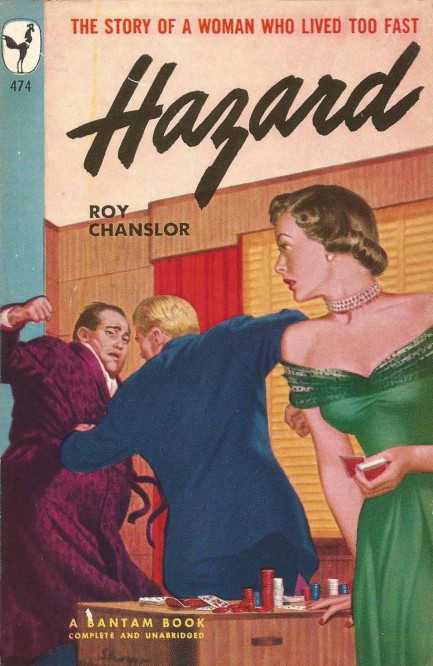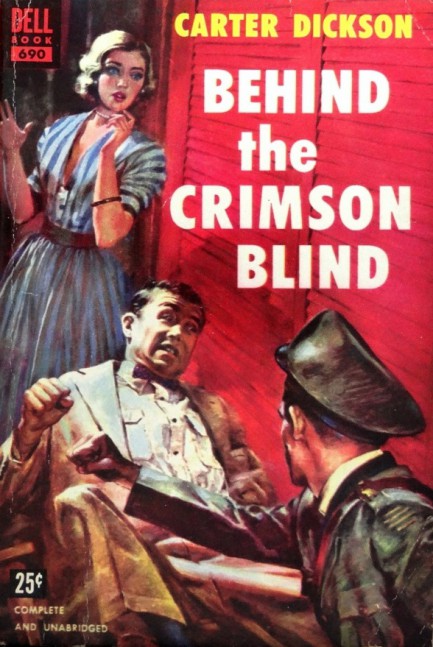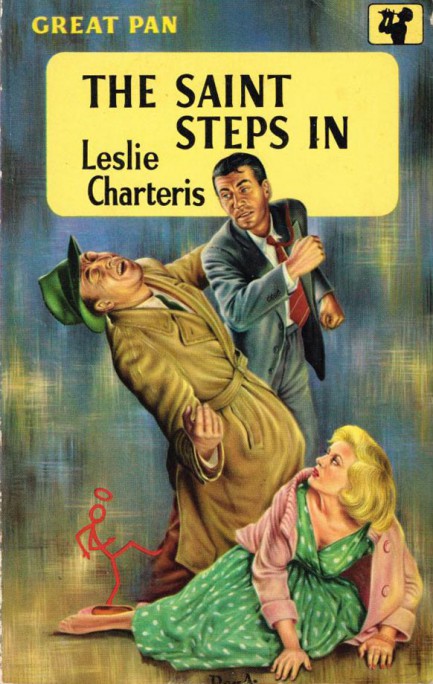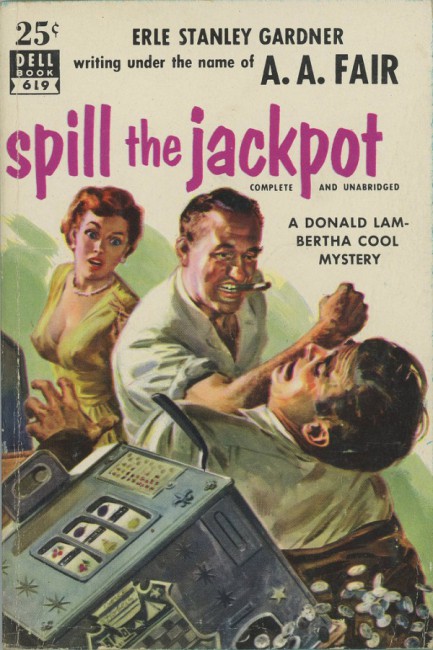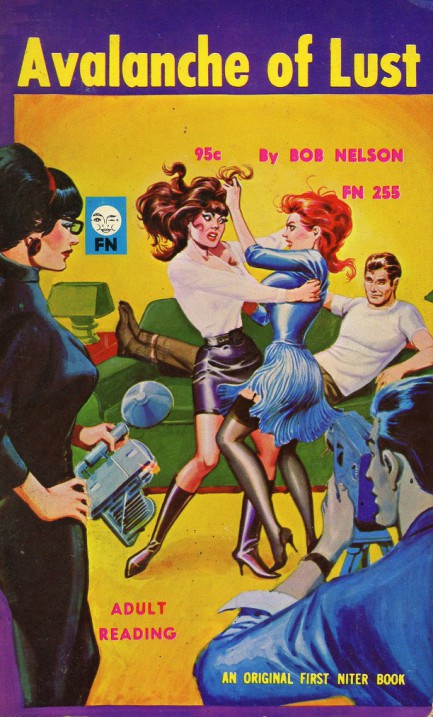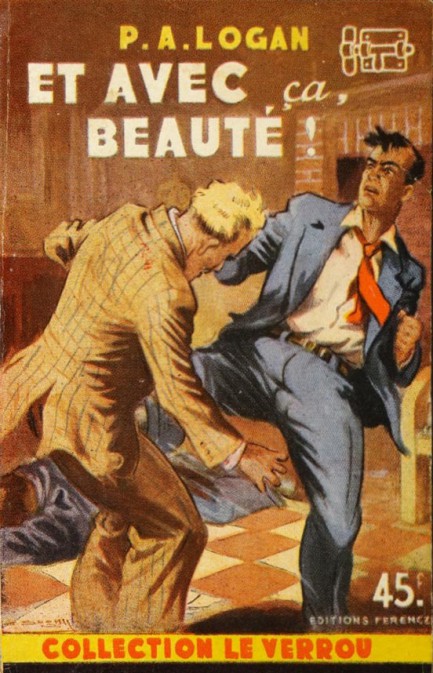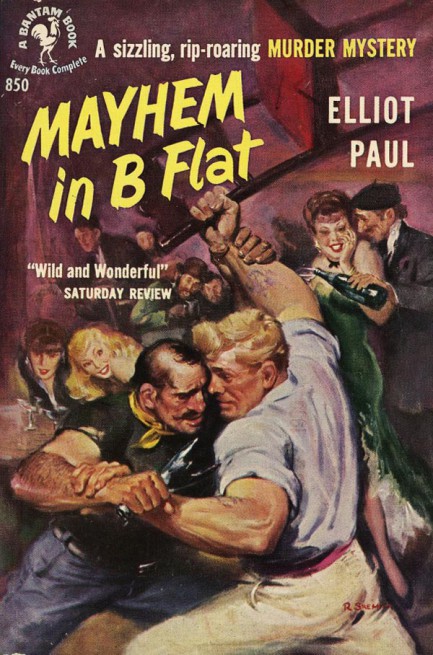| Vintage Pulp | Nov 30 2021 |

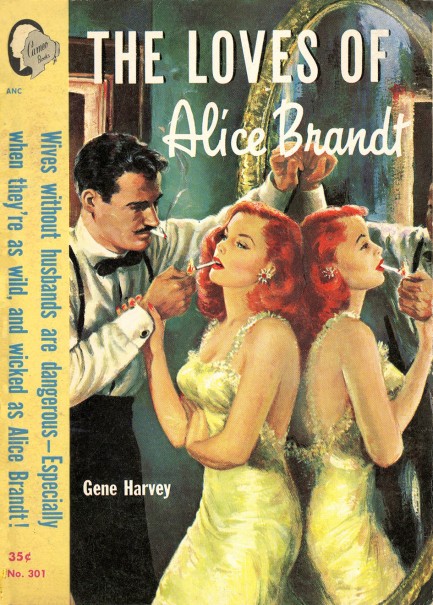
You're not seeing double. This cover for Gene Harvey's The Loves of Alice Brandt is almost identical as the Howell Dodd art from Luther Gordon's Free and Easy, which we showed you recently. This novel, published in 1951, is aka Office Hussy, 1957, by John Hunter. Both Hunter and Harvey were pseudonyms of Jack Hanley. The art is unattributed, but it isn't by Dodd unless he was in a rush. Everything is a bit less detailed, a bit less dimensional—the hair, the dress, the background. But as a brazen copy of Dodd, you have to admire the mystery painter's bolas. You see the original art below.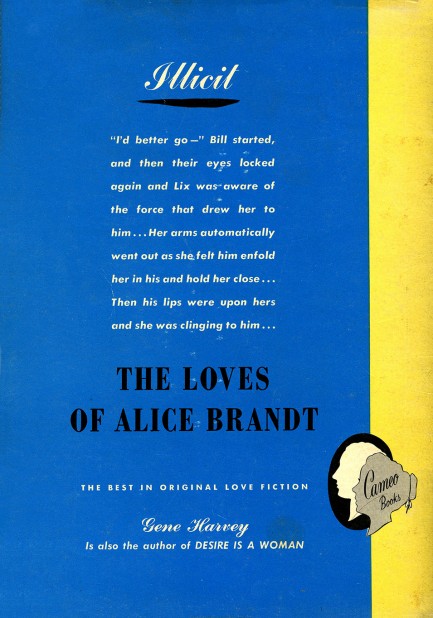
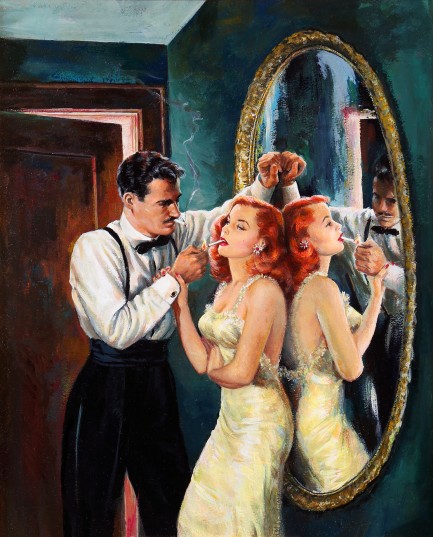
| Vintage Pulp | Jun 29 2020 |

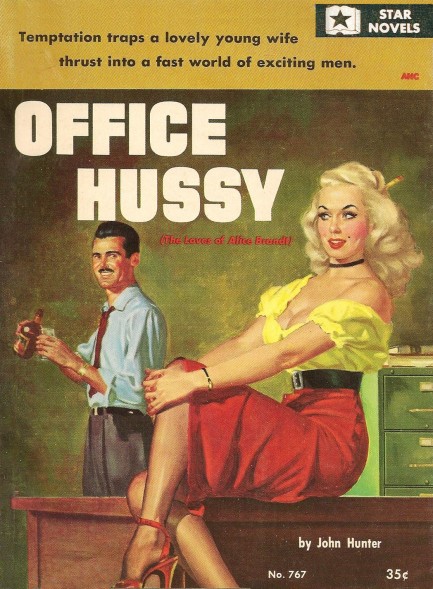
When does a growth spurt occur in a typical business? In mid-century sleaze fiction, it happens whenever secretary and boss agree, as suggested in this brilliant cover by George Gross for John Hunter's 1957 novel Office Hussy, previously published in 1951 as The Loves of Alice Brandt and credited to Gene Harvey. We like to interpret this as the woman being the boss, having just told her subordinate to pour a couple of tall bourbons, and be damned quick about it. But it can be seen the other way if you wish. Doesn't matter, because when consenting parties get together everybody gets a bonus. You already know George Gross was close to the best paperback artist ever, but if you're unfamiliar with him, check here, here, and here.
| Vintage Pulp | Jul 17 2015 |

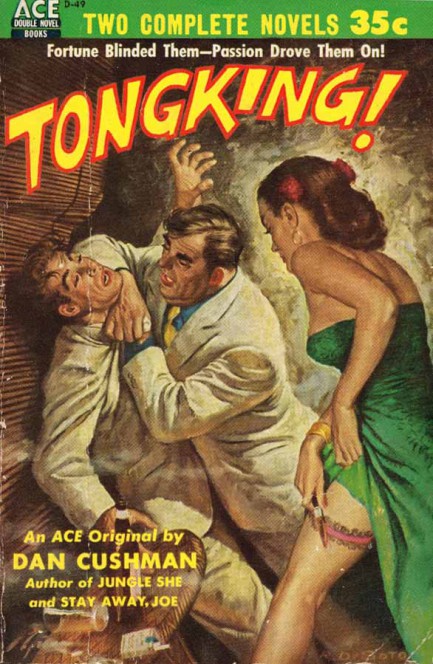
We have another collection today as we prepare to jet away on vacation with the girls. Since the place we’re going is known for rowdy British tourists (what place isn’t known for that?), we thought we’d feature some of the numerous paperback covers featuring fights. You’ll notice, as with our last collection, the preponderance of French books. Parisian publishers loved this theme. The difference, as opposed to American publishers, is that you almost never saw women actually being hit on French covers (we’d almost go so far as to say it never happened, but we’ve obviously not seen every French paperback ever printed). The French preferred man-on-man violence, and when women were involved, they were either acquitting themselves nicely, or often winning via the use of sharp or blunt instruments.
Violence against women is and has always been a serious problem in the real world, but we’re just looking at products of the imagination here, which themselves represent products of the imagination known as fiction. Content-wise, mid-century authors generally frowned upon violence toward women even if they wrote it into their novels. Conversely, the cover art, stripped of literary context, seemed to glorify it. Since cover art is designed to entice readers, there’s a valid discussion here about why anti-woman violence was deemed attractive on mid-century paperback fronts, and whether its disappearance indicates an understanding of its wrongness, or merely a cynical realization that it can no longer be shown without consequences. We have another fighting cover here, and you may also want to check out our western brawls here.